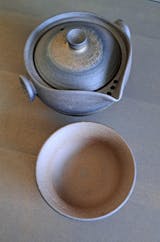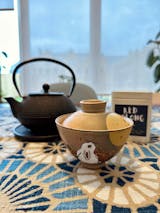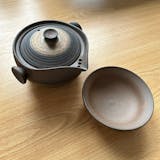
The Art of East-Asian Tea Ceremonies
Share
In a world that’s always rushing, East-Asian tea ceremonies offer something we all crave: a moment of stillness, intention, and quiet beauty. They are far more than the act of brewing and drinking tea—they are rich cultural rituals steeped in history, philosophy, and tradition. Practiced for centuries across China, Japan, Korea, and other regions of East Asia, these ceremonies reflect deep values such as mindfulness, respect, harmony, and the beauty of simplicity.
1. Origins and Evolution
The roots of East-Asian tea culture trace back to China, where tea drinking began as early as the Tang Dynasty (618–907 AD). Initially used for medicinal purposes, tea gradually became an essential part of daily life and spiritual practice. The tradition later spread to Japan, Korea, and Vietnam, each culture adding its own interpretations and aesthetics.
2. Chinese Tea Ceremony: Gongfu Cha (工夫茶)
The Chinese tea ceremony, especially the Gongfu Cha style, emphasises the skilful preparation of tea. “Gongfu” means "skill" or "effort," and every step of the ceremony—from choosing high-quality loose-leaf tea to heating water at the perfect temperature—is performed with care and precision.
Key elements:
Teaware: Small Yixing clay teapots, gaiwans (lidded bowls), fairness pitchers, and aroma cups.
Teas used: Oolong, Pu-erh, green tea.
Steps: Rinsing the teaware, waking up the leaves, multiple short infusions, and sharing tea in small sips.
The Chinese tea ceremony encourages mindfulness, social connection, and appreciation for the taste and aroma of tea.
3. Japanese Tea Ceremony: Chanoyu (茶の湯)
In Japan, the tea ceremony, also known as Chanoyu or The Way of Tea, is a meditative practice deeply influenced by Zen Buddhism. It’s often held in a specially designed tea room or garden to create a serene environment.
Key elements:
Teaware: Chawan (tea bowl), chasen (bamboo whisk), chashaku (tea scoop), and natsume (tea caddy).
Tea used: Matcha (finely ground powdered green tea).
Rituals: Cleaning the tools, whisking the matcha, serving the guest, and expressing gratitude.
Every movement in Chanoyu is choreographed and symbolic, fostering a spirit of tranquility, humility, and respect.
4. Korean Tea Ceremony: Darye (다례)
The Korean tea ceremony, Darye, is known for its relaxed and natural style, embodying the principles of Confucianism and Korean aesthetics. Unlike the more structured Japanese version, Darye focuses on casual hospitality and the joy of sharing tea with loved ones.
Key elements:
Teaware: Simple, earthy ceramic teapots and cups, often handmade.
Teas used: Green tea, fermented tea, flower teas like chrysanthemum.
Spirit: Elegance without extravagance, with an emphasis on grace and calm.
Darye can be performed formally or informally, often accompanied by seasonal snacks and light conversation.
5. Common Threads Across Cultures
Despite their differences, East-Asian tea ceremonies share common themes:
Mindfulness: A focus on being present and intentional in each action.
Respect: Toward the guest, the tea, and the environment.
Harmony: In flavour, setting, and interpersonal exchange.
Aesthetics: A celebration of natural beauty, simplicity, and balance.
6. Modern Relevance and Global Appeal
Today, East-Asian tea ceremonies continue to inspire people worldwide. Tea houses, cultural workshops, and lifestyle brands are reviving these traditions for modern audiences. Whether as a wellness ritual, a cultural experience, or a moment of calm in a busy day, the tea ceremony offers timeless wisdom.










